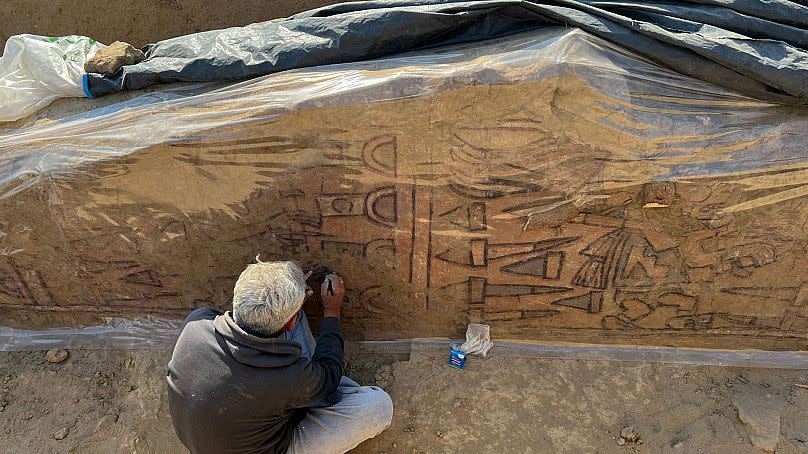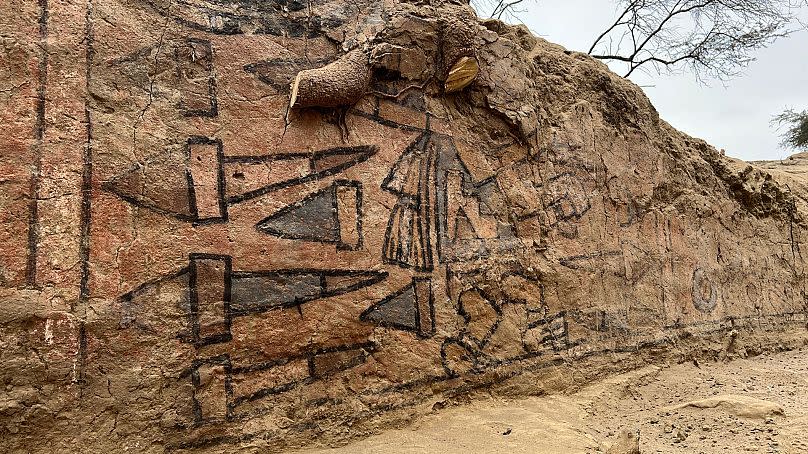Archaeology students uncover long-lost pre-Hispanic mural in Peru
After a four-year search, a team of student archaeologists in northern Peru have made an incredible discovery.
Located in a village in Lambayeque, the excavators led by Swiss archeologist Sam Ghavami, found a long-lost 1000-year-old mural, known as the Huaca Pintada.
The 30-metre-long pre-Hispanic fresco depicts mythical scenes, including a bird-like deity surrounded by warriors, in blue, brown, red, white, and mustard yellow paint, which remain extremely well preserved.
"It's an exceptional discovery, first of all, because it is rare to unearth wall paintings of such quality in pre-Colombian archeology," said Ghavami, from the University of Fribourg.
The painted images "appear to be inspired by the idea of a sacred hierarchy built around a cult of ancestors and their intimate links with the forces of nature," he added.
The tomb that changed the world: 100 years on from the discovery of King Tutankhamun
How the discovery of these ancient bronze Italian sculptures will "rewrite history"
How was the Huaca Pintada discovered?

The mural’s existence became known in 1916, through a series of black and white photographs taken by German ethnologist Hans Heinrich Brüning, who was living in Peru when he heard of the site after treasure hunters tried to loot it but found nothing of value.
As the years went on, thick foliage took over, and no one had tried to look for the paintings until it piqued Ghavami's interest and he went in search of the long-lost fresco.
However, first he had a long battle to obtain permission from the family who own the land where the mural was found.
In total, it took Ghavami and his team four years to find the legendary rock painting.
What is the significance of the discovery?

The excavation has been described as one of ‘the most exciting and important find of recent years’.
"It's an exceptional discovery, first of all, because it is rare to unearth wall paintings of such quality in pre-Colombian archeology," explains Ghavami.
Aside from its excellent condition, the mural also provides evidence for the development and evolution of an ancient Peruvian cultural phenomenon. Indeed, the fresco is believed to form part of the Huaca Pintada temple, which belonged to the Moche civilization that flourished between the 1st and 8th centuries.
However, the discovery also shows a mixture of styles and elements of two pre-Incan cultures: the Moche and the Lambayeque, who lived on Peru's north coast between 900 and 1350 AD.
Ghavami has stated that deciphering the mural's message will form part of his research about the sociocultural changes that occurred in Lambayeque. But he believes it "could be interpreted as a metaphorical image of the political and religious order of the region's ancient inhabitants."
The site has currently been covered up for preservation. It will likely be restored to its former glory and eventually opened up to the public.
Check out the video above for a closer look at the extraordinary discovery.

 Yahoo News
Yahoo News 
